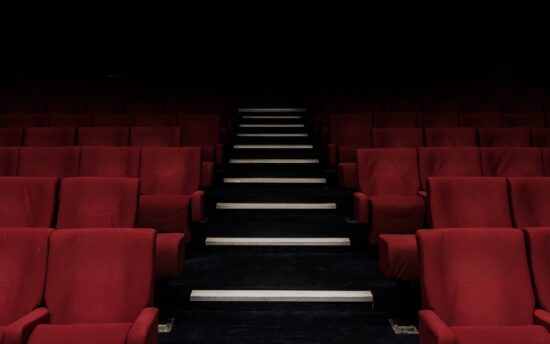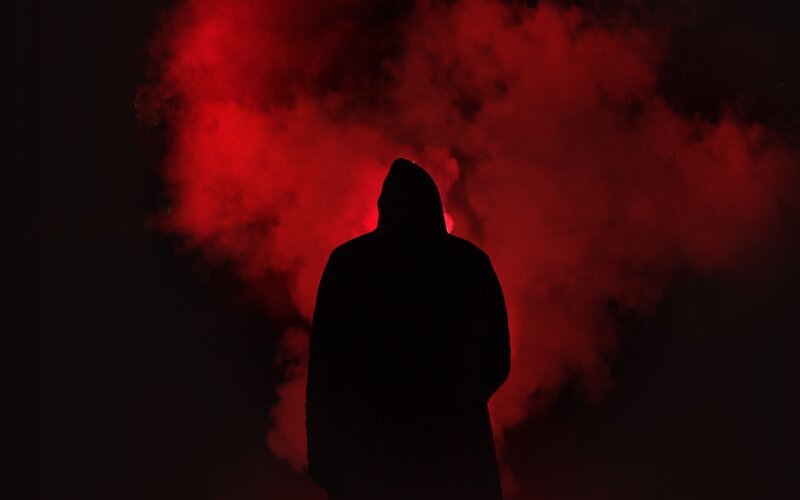
What is genre? If you’re a film buff, you might already have a good idea of what your favourite movie genres are.
But maybe you don’t know where the word ‘genre’ comes from, or perhaps you’ve never considered the importance of genre when it comes to producing and marketing films? If so, let’s take a closer look at everything you need to know about film genres.
What are film genres?
Movie genres are simply different types of films that fall into categories such as romantic comedies or action films – indeed, the word ‘genre’ comes from the French for ‘type’ or ‘sort’.
Films that sit within a particular genre usually feature specific stylistic or plot elements that can help you to identify what genre it is – we’ll go into these in more detail later. But for now, let’s hear it from one of the modern masters of genre filmmaking, Edgar Wright. As he says in his BBC Maestro course on filmmaking:
“Genre is a classification of art in which a shared group of works have similar elements of style or subject matter. So, for example, the horror genre will likely have a supernatural or frightening or otherworldly element to the film’s story. Westerns will focus on cowboys or frontier settings. It’s just a way to describe a group of films that play on tropes or story patterns.”
Each genre of film has different conventions and tropes, so let’s take a brief look at some of the main film genres, and the genre elements to look out for within each type of movie.

Sci-fi films
Sci-fi – short for science fiction – films are focused on futuristic concepts. They’re often centred around technology, or they could deal with themes like time travel, parallel dimensions, or alien lifeforms. Science fiction is a broad genre, and science fiction movies aren’t bound to a particular time or era – in fact, one of the most common sci-fi tropes is moving between different time periods or even dimensions.
Science fiction has been popular in filmmaking for over a century. It’s often said that Georges Melies’ A Trip to the Moon, a silent film from 1902, was the first science fiction film, but during the next few decades, the genre wasn’t taken particularly seriously, and most sci-fi films were low-budget B movies.
However, after Stanley Kubrick’s 2001: A Space Odyssey in 1968, which used ground-breaking visual effects, the genre really started to take off. One of the most famous examples of the science fiction genre is the Star Wars series, which has generated an estimated $10.316 billion at the box office worldwide. The firm film in the franchise was released in 1977, and the series is still going strong today with two new spin-off movies currently in the works.
On a deeper level, sci-fi films often provide criticism or commentary on the modern world. By discussing important themes within a setting that doesn’t quite reflect reality, filmmakers can delve deeper into social, political and economic issues without causing controversy.
Action genre
Action movies tend to be fast-paced and high-energy. They usually look amazing on the big screen and are the perfect choice for viewers looking for a bit of escapism. The plot of an action movie usually focuses around one central hero – think of Bruce Willis’ John McClane in Die Hard – who faces a series of life-threatening situations as they fight their way to resolving a conflict or achieving their goal, against incredible odds and usually a dastardly enemy (Hans Gruber, in John McClane’s case).
Action films leave you on the edge of your seat, thanks to a series of tropes you’ll almost always find in this genre, such as car chases, explosions, fights, and slow-motion shots. Within the action movie genre, there are several different sub-genres, such as:
- Disaster films, such as 1974’s Earthquake, which follows the struggle for survival after a devastating earthquake in LA
- Action-horror, like the Resident Evil series of films
- Action-adventure, like the Rambo franchise
- Buddy cop movies, which are usually comedy action films featuring a mismatched pair of police officers, such as 1995’s Rush Hour, or 2007’s Hot Fuzz
Martial arts films
Another sub-genre of the action category is martial arts films. The first martial arts film, Akira Kurosawa’s Sugata Sanshiro, was made in 1943 and is the story of a man learning Judo, but the genre didn’t gain worldwide popularity until Bruce Lee’s films in the 1970s.
Martial arts films usually focus on the action, with beautifully presented and often highly stylised fight scenes. The plot usually follows a lead protagonist who is highly skilled in martial arts, trying to reach an end goal while facing numerous obstacles – and several fights – along the way. They may receive further martial arts training from a master as part of their journey, and they’ll usually have one main adversary to defeat before achieving victory.

Horror genre
Horror films are, unsurprisingly, designed to scare viewers. One of the first popular horror movies was 1931’s Dracula, which adapted Bram Stoker’s novel, and defined the vampire archetype that we all know today. Several popular horror films followed in the 40s and 50s, but the horror genre became more popular in the 1960s, with the release of Alfred Hitchcock’s Psycho, which set the tone for many of the horror tropes – such as the use of music – still used today. The 70s were a key decade for horror films, with Jaws, Halloween and Alien all big commercial hits, while the 80s and 90s saw the development of new horror sub-genres, like slasher films and supernatural horror.
There are a few key tropes that can be found in many horror films. These include:
- The jump scare, designed to frighten cinemagoers with an abrupt change such as a terrifying image flashing up on screen, or a hand grabbing the main character out of nowhere, often accompanied by a loud, startling noise
- Use of music to intensify the drama and make viewers feel uneasy
- Tight framing, which focuses on a close-up and prevents viewers from seeing what else is lurking in other corners of the scene
- Dim lighting
Horror is a broad genre, and covers everything from slasher movies like Scream, to comedy zombie films such as Shaun of the Dead, meaning horror stories can be told in a great variety of different ways. The genre also provides an opportunity for filmmakers to be playful. Both Scream and Shaun of the Dead are hyper-aware of the genre in which they operate – in Shaun of the Dead’s case, that means referencing films that have come before like Night of the Living Dead, while Scream plays with typical horror tropes, with one main character even teaching others the main ways to survive a horror film.
Thriller genre
A close relation of the horror genre, thrillers are narrative-driven films that keep viewers on the edge of their seat. They’re usually very suspenseful, and key information is often left out deliberately to keep watchers guessing until the film’s climax.
There are various sub-genres of thriller films, including action thrillers, psychological thrillers, spy thrillers, supernatural thrillers and crime thrillers – but the key thing that unites them all is a feeling of tension, usually alongside a mystery that the main character needs to solve before it’s too late.
Some of the most popular thriller movies include Inside Man, Die Hard, The Bourne Identity or any of the James Bond films.
Romantic comedy
Romantic comedies, often called rom coms, are one of the most enduringly popular types of films, despite their fairly predictable plot lines. Two people meet, often in the opening scene, via a humorous incidence known as a ‘meet cute’. This is a rom-com trope in which the main characters meet in funny or unusual circumstances, like when Hugh Grant’s character Will spills orange juice all over Julia Roberts’ character Anna in Notting Hill.
The couple will then usually be pulled apart over the course of the film, before realising how much they love each other and reuniting at the end – although, of course, these conventions are often subverted, as in 500 Days of Summer, when (spoiler alert!) the main couple don’t end up together in the end.

Can you mix genres?
Yes! Rules are there to be broken, after all, and some of the best films are crossovers between different genres. This is something Edgar Wright likes to play with in his films. As he explains in his BBC Maestro course:
“For me, genre filmmaking is all about playing in a world that’s very specific. It’ll have certain conventions that you’ll find in most films within that genre so you can mess around with those conventions in a fun way and craft your specific vision within that universe.”
He goes on to explain how he meshed different genres together in Shaun of the Dead:
“For Shaun of the Dead, the idea was to take a romantic comedy, and drop it right in the middle of a zombie apocalypse.
“So, you have all the tropes of a zombie film – society crumbling, zombies taking over, characters figuring out how to defeat the zombies, finding a hideout to stay safe in – but the main thrust of the movie is about a guy who’s shitty at relationships and finally realises that he needs to fix his life, just as the zombie apocalypse hits.
“If that movie works well at all, it’s because we treated the characters in the situations as serious, which also allowed us to play with the genre even more.”
Is genre important?
Making a film within a particular genre can be a great way of pitching your film idea to studios. It’s easier for them to categorise your film, helping them to understand how much of a chance it has of being a commercial success as some types of films, like action, sci-fi and adventure films usually do better in the box office than horror and romance. As Edgar Wright explains, creating a genre film is:
“…especially worthwhile if you want to make something personal, because you can still do that within a genre film. In fact, it might be a good way to get a more personal film made, if it’s within a saleable genre.”
Categorising your film within a specific genre increases the chances that audiences will come to see it. Many people have a particular genre they enjoy best, such as rom-coms or action films, so if your film fits within a specific niche that people can easily identify, they may be more likely to go and see it.
It also gives you as a filmmaker defined conventions to work within. If you’re making an action film, for example, you’ll know that it should include some car chases, big fight scenes, and some slick slow-motion shots.
However, you should also know that you don’t need to stick to a specific genre for your whole career, and you should feel free to mix and match, creating the films that you enjoy rather than the ones you think will be commercial successes. Edgar Wright explains:
“I don’t think there’s a right or wrong choice between wanting to make a specific genre for your entire career or wanting to branch out and do something different each time. Look at the careers of filmmakers like Alfred Hitchcock and John Ford who, even though they departed here and there throughout their filmographies, basically focused on a specific genre, and perfected them over and over again. They were working within a specific framework, using different stories and characters within those formulas to explore themes and ideas that they kept wanting to return to. On the other hand, you have someone like Stanley Kubrick, who rarely stayed put. He bounced around every single genre imaginable and made a masterpiece in almost every one of them.”
So, whether you prefer action, thrillers, horror, or you love a mixture of different types of films, don’t feel constrained by genre. Feel free to use tropes from different genres as you please – who knows, you may even create the next Shaun of the Dead!
Want to find out more about different aspects of filmmaking? Take Edgar Wright’s BBC Maestro course for expert insight on everything from writing to costume design.

Give the gift of knowledge
Surprise a special someone with a year's access to BBC Maestro or gift them a single course.








